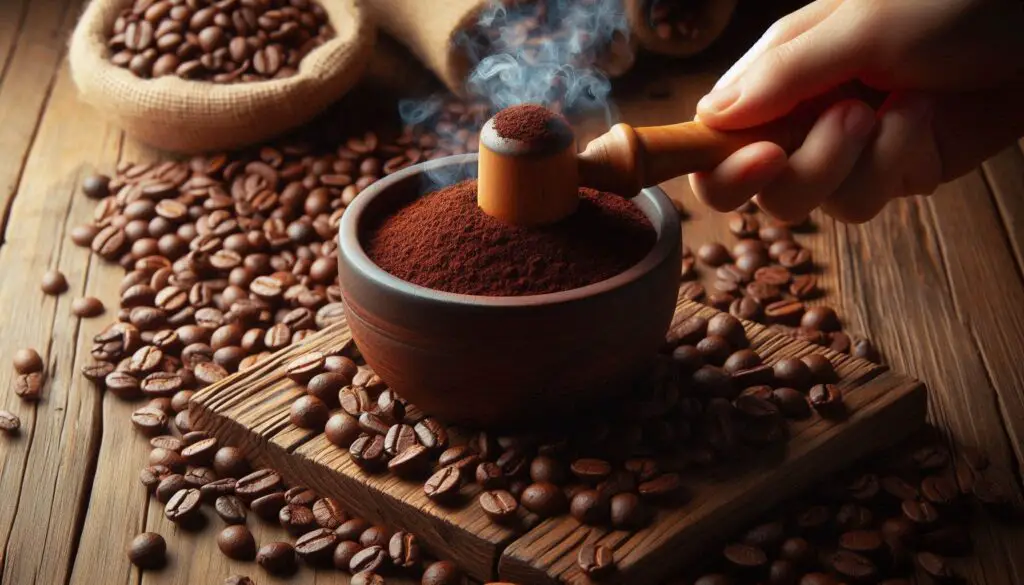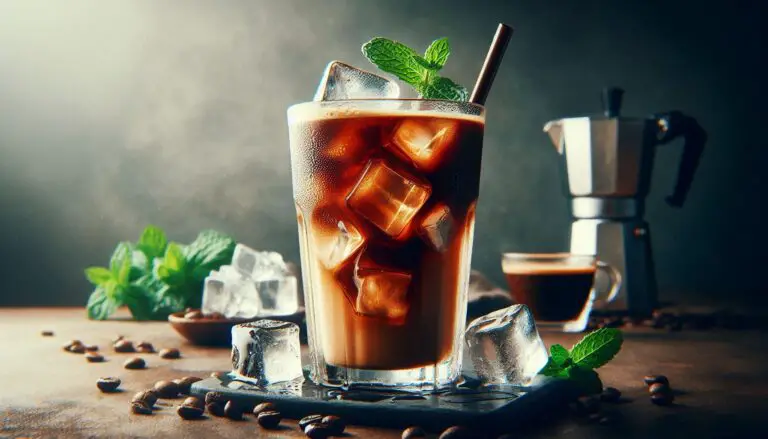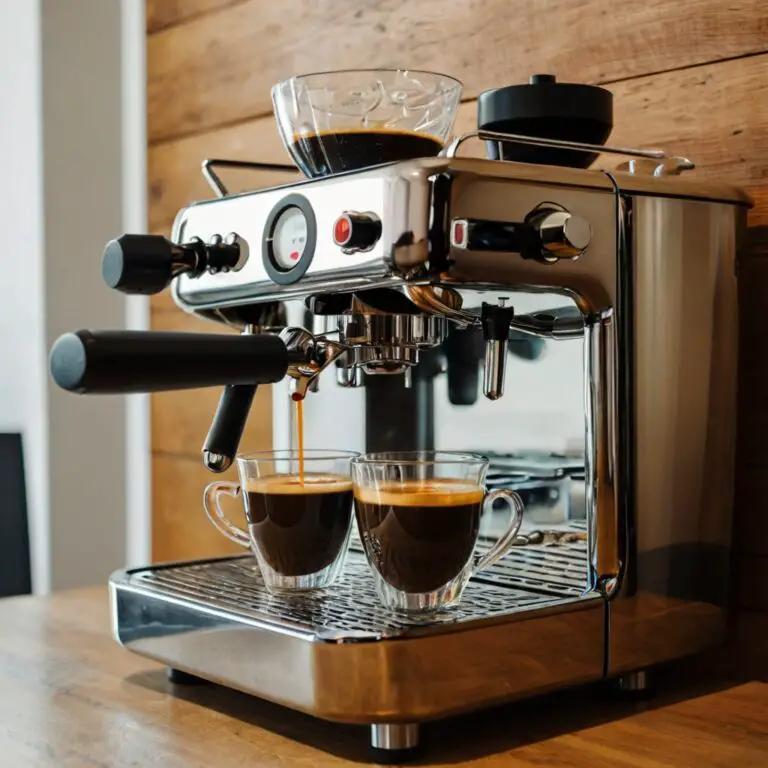Introduction
For true coffee enthusiasts, the journey to the perfect cup never ends. While brewing methods and quality beans are essential, numerous hacks can elevate your coffee experience to the next level. Incorporating simple yet effective tricks can enhance your coffee’s flavour, consistency, and overall enjoyment. This article will explore ten indispensable coffee hacks that every enthusiast needs to know.
Optimize Your Coffee Storage
Proper storage of coffee beans is essential to preserve their freshness and flavour. Even the highest-quality beans can deteriorate in aroma and taste if not stored correctly.
Use Airtight Containers
Always store your coffee beans in airtight containers to preserve the aromatic compounds and prevent oxidation. Oxygen is the enemy of fresh coffee, which can cause the beans to stale rapidly. Containers with one-way valves allow gases from the beans to escape while keeping air out, maintaining optimal freshness.
Store in a Cool, Dark Place
For fresh coffee beans, store them in a sealed container in a cool, dark place. Light, heat, and moisture can make the flavours deteriorate. So, keep the beans away from direct sunlight, heat sources like the stove, and any areas where moisture can build up. A calm, dark area in your kitchen, like a pantry or cupboard, is perfect for storing your coffee beans.
Avoid the Freezer
Contrary to popular belief, storing coffee beans in the freezer can cause moisture buildup and degrade their quality. The fluctuating temperatures in a freezer can lead to condensation when the beans are removed, affecting their flavour. It’s best to keep them in an airtight container at a stable room temperature.

Perfect Your Grind
Remember, the size of the coffee grounds can affect how your coffee tastes. Getting the grind size right is crucial because it directly affects how the coffee is brewed and its flavour. Different ways of making coffee, like pour-over, French Press, or espresso, need different grind sizes to ensure the coffee tastes as good as possible.
Invest in a Burr Grinder
A burr grinder offers the advantage of producing a more uniform grind size when compared to a blade grinder. By using two abrasive surfaces to crush the beans, burr grinders create grounds that are consistent in size.
Achieving uniformity in coffee bean grinding is essential for ensuring a consistent and even extraction process during brewing. This uniformity contributes to producing a well-balanced and flavorful cup of coffee. In contrast, the uneven chopping action of blade grinders results in a combination of fine and coarse coffee particles, which can have a detrimental effect on the overall quality of the brewed coffee.
Match Grind Size to Brewing Method
Different ways of making coffee require different coffee grounds of various sizes. For instance, you should use coarse grounds to make French Press coffee. This lets the water mix with the coffee for a longer time, giving the coffee a strong flavour. On the other hand, making espresso requires acceptable grounds to extract the flavours.
A medium grind is well-suited to this brewing method for drip coffee makers. It balances surface area and extraction time, producing a smooth and consistent cup of coffee. A medium-fine grind is preferred for pour-over methods because it enables a slightly slower extraction, allowing for a nuanced and flavorful brew.
Remember to match the grind size with the brewing method to get the best flavour from your coffee. This helps the flavours develop and creates a tremendous coffee-drinking experience.
Grind Just Before Brewing
For the freshest flavour, grind your coffee beans before brewing rather than using pre-ground coffee. Ground coffee loses its aromatic compounds quickly due to exposure to air. You are grinding fresh just before brewing, which captures your cup’s full spectrum of flavours.
Enhance Flavor with Water Quality
Water quality is a key factor often overlooked in the coffee-making process. Proper water can significantly improve the taste of your brew.
Use Filtered Water
When brewing coffee, it is crucial to pay close attention to the type of water you use. While tap water is convenient, it may contain impurities that can impact the flavour of your coffee. Elements like chlorine, sediment, and various minerals found in tap water can disrupt your coffee’s delicate balance of flavours, resulting in a less satisfying drinking experience.
To ensure that you’re getting the best possible flavour from your coffee, it’s recommended that you use filtered water. A good water filter effectively removes these impurities, allowing your coffee’s authentic and nuanced flavours to shine. By using filtered water, you can experience the true potential of your coffee without any unwanted taste alterations caused by impurities in tap water.
Control Water Temperature
For the best coffee, use water between 195°F and 205°F. If the water is too hot or cold, the coffee might be too weak or strong. If the water is too hot, it can make the coffee taste bitter. If it’s too cold, it might not bring out enough flavour. Use a thermometer or an electric kettle with temperature control to get the right temperature.
Experiment with Mineral Content
Different mineral contents can highlight various flavour notes in your coffee. Experiment with water that has varying mineral levels to find your preference. Some minerals, like magnesium and calcium, enhance coffee’s flavour, while others can dull it. Bottled spring or specially formulated coffee water can help you achieve the desired taste.
Master the Art of Frothing Milk
Frothing milk can transform a regular cup of coffee into a luxurious café-style drink. The proper technique and tools can make all the difference.
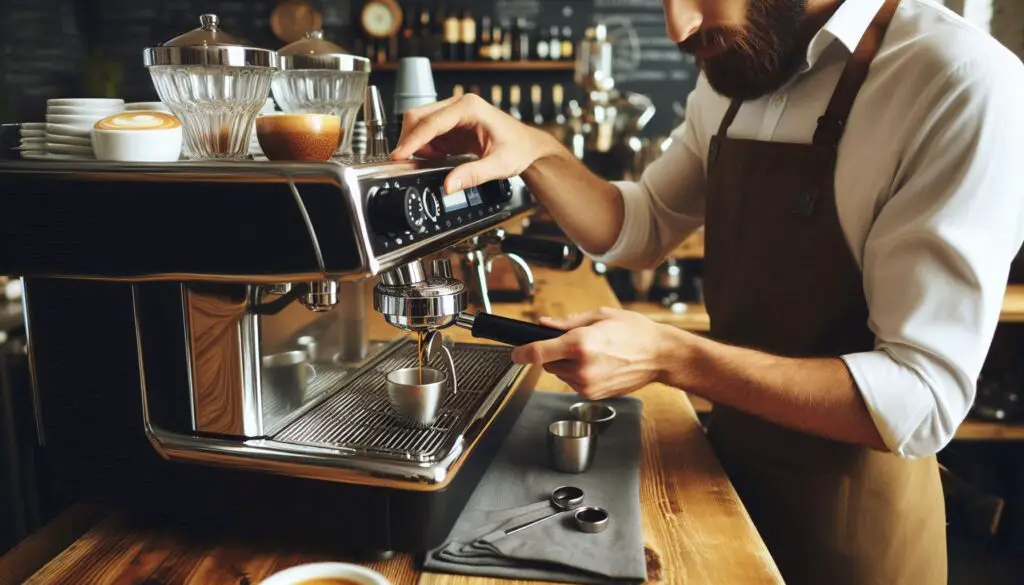
Use Cold Milk
For optimal frothing and a more stable foam, it is best to use cold milk straight from the refrigerator. Cold milk facilitates longer incorporation of air before it begins to heat up, ultimately leading to finer bubbles and a smoother texture in the frothed milk.
Choose the Right Frothing Tool
Whether you use a steam wand, handheld, or manual frother, each tool has its own technique. Find the one that works best for you. Steam wands on espresso machines produce professional-grade microfoam, while handheld electric frothers are convenient and easy to use. Manual frothers, like a French press, can also create good foam with some elbow grease.
Practice Microfoam Technique
For latte art, aim to create microfoam with tiny, fine bubbles. This type of foam is ideal for pouring intricate designs. Start by submerging the steam wand just below the milk’s surface and gradually lowering the pitcher as the milk expands. Aim for a smooth, glossy texture that blends seamlessly with the coffee.
Spice Up Your Coffee
Adding spices can enhance the flavour of your coffee. Simple ingredients can elevate your morning brew into something extraordinary.
Cinnamon and Nutmeg
Sprinkle cinnamon or nutmeg on your grounds before brewing for a warm, aromatic twist. These spices add a cosy, comforting flavour that complements coffee’s natural sweetness.
Vanilla Extract
Adding just a few drops of high-quality vanilla extract to your coffee can introduce a delightful, creamy sweetness. The vanilla amplifies the coffee’s richness, working harmoniously with its natural flavours and adding a subtle layer of complexity without dominating the overall taste experience.
Cardamom
Cardamom is a highly prized spice in Middle Eastern coffee due to its distinct and exotic flavour profile. When a small amount of ground cardamom is added to coffee, it imparts a fragrant aroma and subtle citrus undertones, elevating the overall flavour profile of the drink. This aromatic spice has the power to impart a delightful and unique twist to your daily coffee routine.
DIY Coffee Syrups
Homemade syrups can customize and elevate your coffee experience. Making your syrups allows you to control the ingredients and tailor the flavours to your liking.
Simple Syrup Base
To create a simple syrup base for coffee syrups, dissolve an equal amount of sugar and water over low heat. This foundational syrup provides a versatile canvas for infusing various flavours to enhance your coffee experience.
Flavor Variations
Add flavours like vanilla, caramel, or hazelnut to your simple syrup for a personalized touch. Add vanilla beans, caramelized sugar, or hazelnut extract to your syrup base and simmer until infused.
Storage Tips
Store your homemade syrups in the refrigerator in airtight containers for up to a month. Label each syrup with its flavour and preparation date to ensure freshness.
Cold Brew Techniques
Cold brew coffee is a smooth, refreshing alternative to hot coffee, perfect for warm weather. The slow extraction process results in a rich, less acidic coffee concentrate.
Choose the Right Coffee-to-Water Ratio
A standard ratio for cold brew is 1:8 (one part coffee to eight parts water). Adjust to your taste preference. For a more substantial concentration, use a 1:4 ratio.
Steep Time Matters
Allow your cold brew to steep for at least 12 hours in the refrigerator for optimal extraction. Longer steeping times can enhance the flavour, but be careful not to over-extract, which can introduce bitterness.
Filter Carefully
After you let your cold brew concentrate steep, strain it to remove any leftover coffee grounds. You can pour the concentrate through a fine mesh sieve or a coffee filter. This step is essential to ensure your final product is smooth and clean, with no sediment.
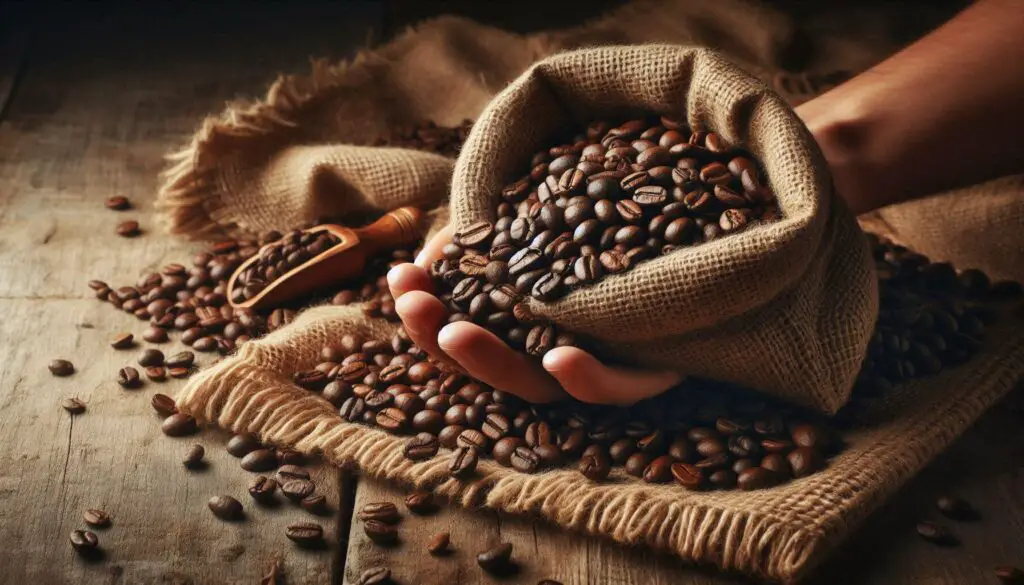
Experiment with Brewing Methods
Trying different brewing methods can expand your coffee repertoire and enhance your appreciation. Each technique offers unique characteristics and flavours.
French Press
The French Press is excellent for full-bodied, rich coffee. Use a coarse grind and steep for about 4 minutes. The metal mesh filter allows oils and fine particles through, producing a robust flavour.
AeroPress
The AeroPress is versatile because it can be used to make different types of coffee. You can use various sizes of ground coffee, water temperatures, and how long you let the coffee sit. You can make anything from a robust and espresso-like shot to a smooth Americano with it.
Pour-Over
Pour-over methods like the Hario V60 allow precise control over the brewing process. Use a medium-fine grind and pour slowly, circularly, highlighting the coffee’s delicate flavours and aromas.
Make Coffee Ice Cubes
Coffee ice cubes are a simple hack to prevent your iced coffee from getting diluted. They add more coffee flavour as they melt rather than water your drink.
Brew Strong Coffee
Start brewing a pot of strong coffee using your preferred method for the besticed coffee. Let the coffee cool to room temperature so the ice cubes won’t dilute the flavour. Strong coffee will keep its flavour even after adding ice, resulting in a delicious and refreshing iced coffee.
Freeze in Ice Cube Trays
After your coffee has cooled, carefully pour it into ice cube trays, ensuring not to overfill. Then, place the filled trays in the freezer and wait for the coffee to freeze completely. Removing the coffee cubes is easier if you use silicone ice cube trays.
Use in Iced Coffee Drinks
Add the ice cubes to your iced coffee drinks to keep them strong and flavorful as they melt. They’re also great for blending into frappes or smoothies.
Clean Your Equipment Regularly
Regular maintenance of your coffee equipment ensures better-tasting coffee and a longer tool lifespan. Clean equipment prevents old coffee residues from affecting the flavour of your fresh brew.
Daily Cleaning
Rinse your coffee maker and tools to remove coffee oils and residue after each use. This simple step keeps your equipment in good condition and prevents buildup.
Weekly Deep Clean
Perform a deeper clean weekly by using a descaling solution for your coffee maker and thoroughly washing all parts. Descaling removes mineral deposits that can affect your machine’s performance.
Replace Filters and Parts
To keep your equipment in top condition, regularly replace any filters, gaskets, or other parts as the manufacturer recommends. Following the manufacturer’s maintenance schedule ensures your coffee maker functions optimally.
Conclusion: Elevate Your Coffee Game
By using these ten tricks when you make coffee at home, you can make better coffee and enjoy coffee that tastes like it’s from a cafe every day. Try these tips to see what works best for you and to make your coffee even better.
FAQ
Q: Is it acceptable to keep my coffee beans in the freezer?
A: While possible, storing coffee beans in the freezer can cause moisture buildup and affect the flavour. It’s better to store them in an airtight container in a cool, dark place.
Q: What’s the best way to clean a French press?
A: Disassemble the French Press and wash all parts with warm, soapy water. Gently scrub the mesh filter with a brush. Rinse thoroughly and let it air dry.
Q: What methods can I use to reduce the bitterness in my coffee?
A: To reduce bitterness, ensure you’re not over-extracting your coffee. Use your method’s correct grind size, water temperature, and brewing time. Adjusting these variables can help achieve a balanced flavour.
Q: What’s the difference between a blade grinder and a burr grinder?
A: A blade grinder chops coffee beans unevenly, resulting in inconsistent grind size, while a burr grinder crushes the beans between two abrasive surfaces for a uniform grind, ensuring better extraction and flavour.
Q: How can I create latte art at home?
A: To create latte art, cold milk and a steam wand produce microfoam. Pour the steamed milk into your espresso with a steady hand, and practice different pouring techniques to create designs.

